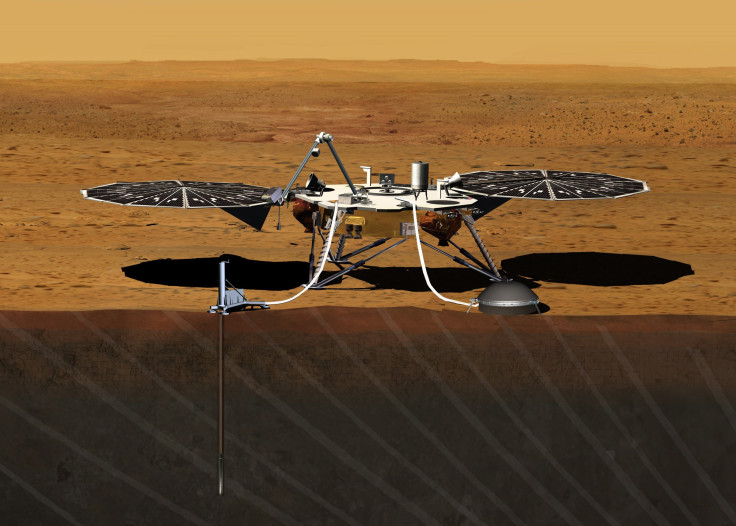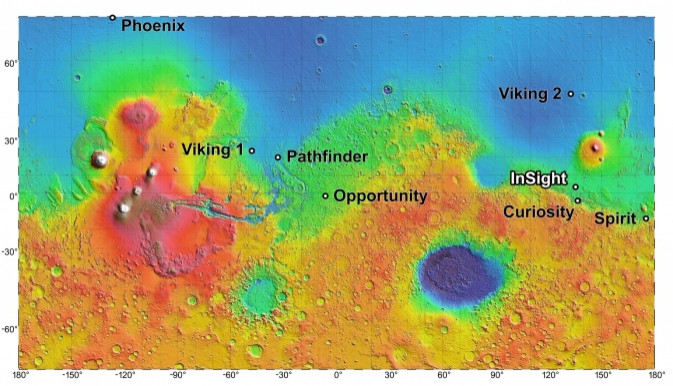NASA Targets 4 Potential Landing Sites For 2016 InSight Mars Mission To Study Planet’s Core

NASA has selected four potential landing sites on Mars’ surface for a future probe, which will be launched in 2016 to study the planet's core.
According to NASA, the Interior Exploration Using Seismic Investigations, Geodesy and Heat Transport, or InSight, stationary lander will take six months to touch the Martian surface after its scheduled launch in March 2016. It will land on one of the four sites selected from a field of 22 candidates.
“We picked four sites that look safest," Matt Golombek, geologist at NASA's Jet Propulsion Laboratory, or JPL, in Pasadena, Calif., said in a statement released on Wednesday. "They have mostly smooth terrain, few rocks and very little slope."
NASA said that it will select the best out of the four potential sites in coming months by examining data from its Mars Reconnaissance Orbiter cameras, which are currently set on the “semi-finalist spots” that lie near each other on an equatorial plain in an area of Mars called Elysium Planitia.

Each of the potential landing sites is an ellipse, measuring 81 miles from east to west and 17 miles from north to south. NASA engineers calculate that the spacecraft will have a 99 percent chance of landing within that ellipse, if it is aimed toward the center of the site.
Scientists said that Elysium Planitia is one of three areas on Mars that meet two basic engineering constraints for InSight. One requirement is that a site should be close enough to the equator for the lander's solar array to have adequate power at all times of the year. In addition, the elevation must be low enough to have sufficient atmosphere above the site for a safe landing.
According to NASA, the InSight mission will examine the processes that formed and shaped Mars, helping scientists better understand the evolution of the inner solar system's rocky planets, including Earth.
“This mission's science goals are not related to any specific location on Mars because we're studying the planet as a whole, down to its core,” Bruce Banerdt, InSight principal investigator at JPL, said in the statement. “Mission safety and survival are what drive our criteria for a landing site.”
Yet another important criterion could be how penetrable the ground is as InSight will deploy a heat-flow probe that will hammer itself three yards to five yards into the planet's surface to monitor heat coming from its interior. InSight also will deploy a seismometer on the surface and will use its radio for scientific measurements, according to NASA.
© Copyright IBTimes 2024. All rights reserved.






















